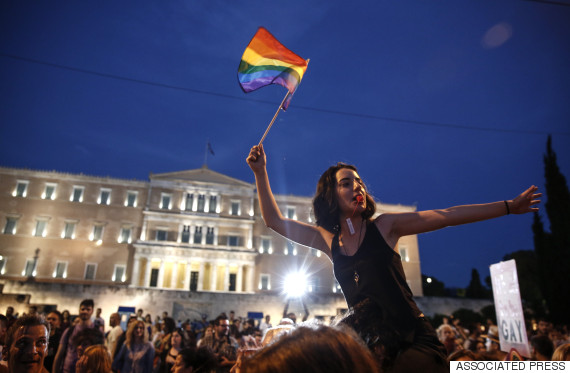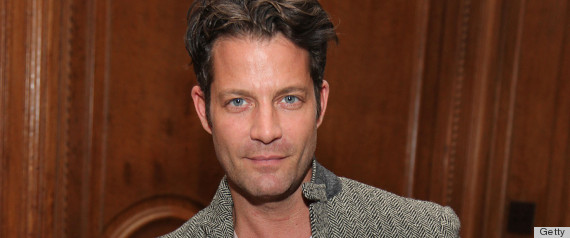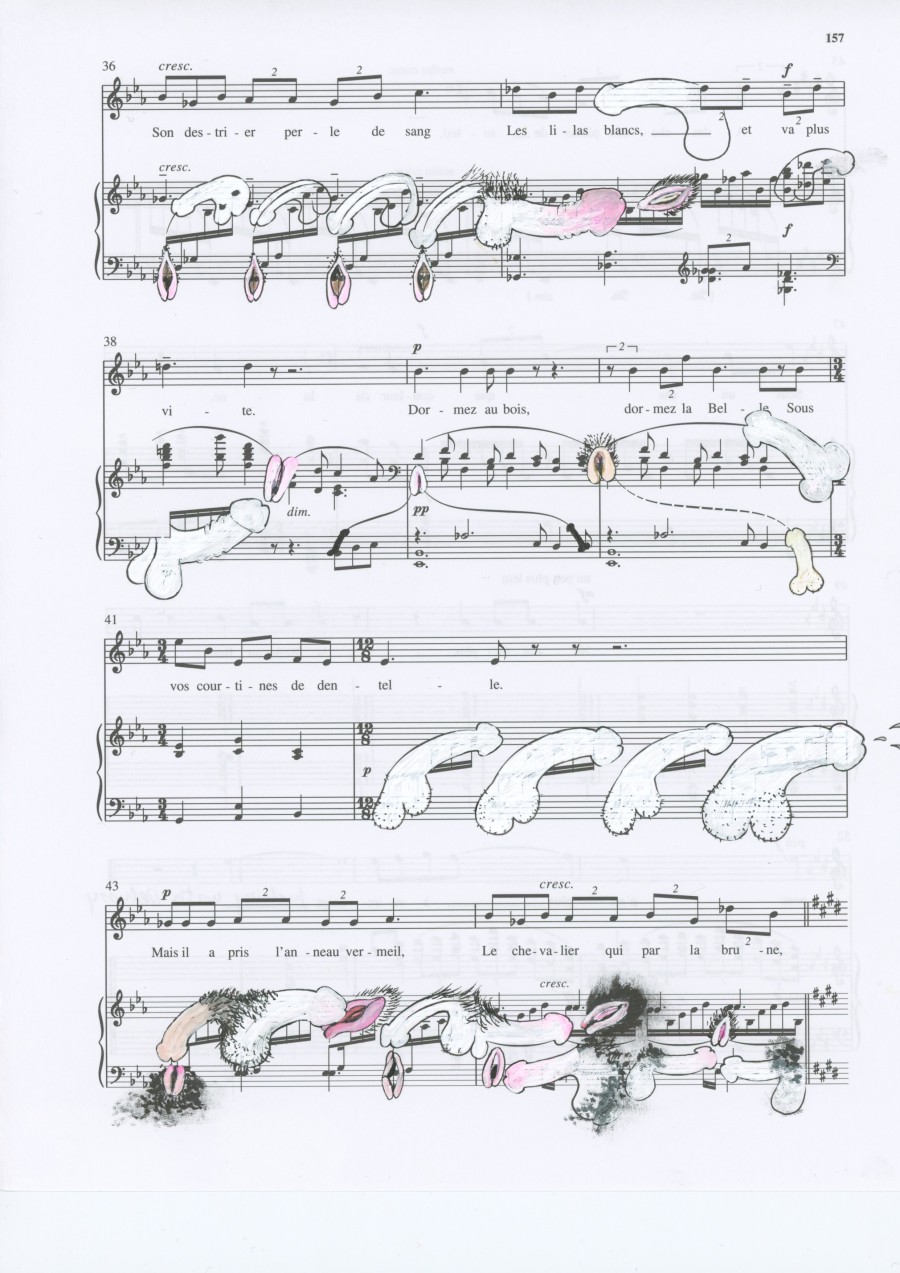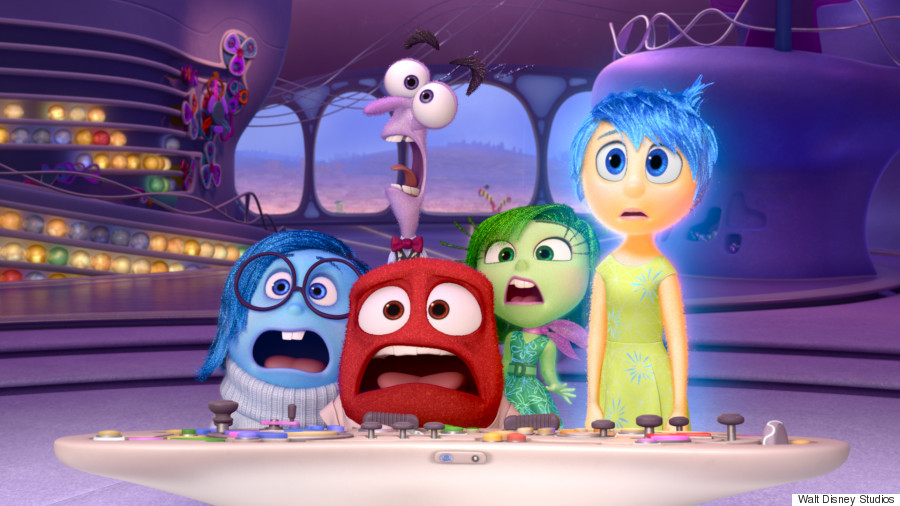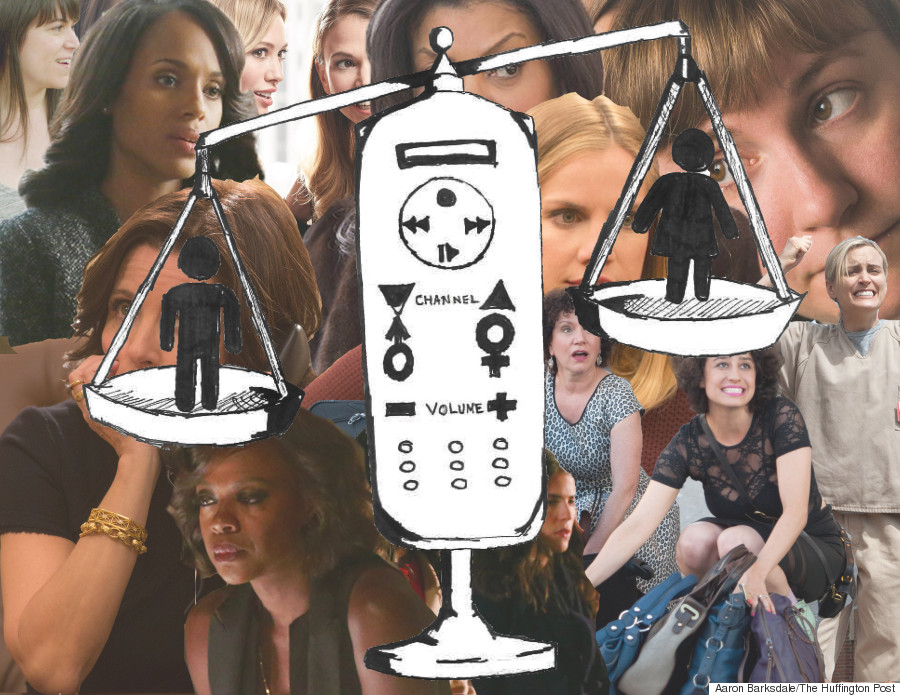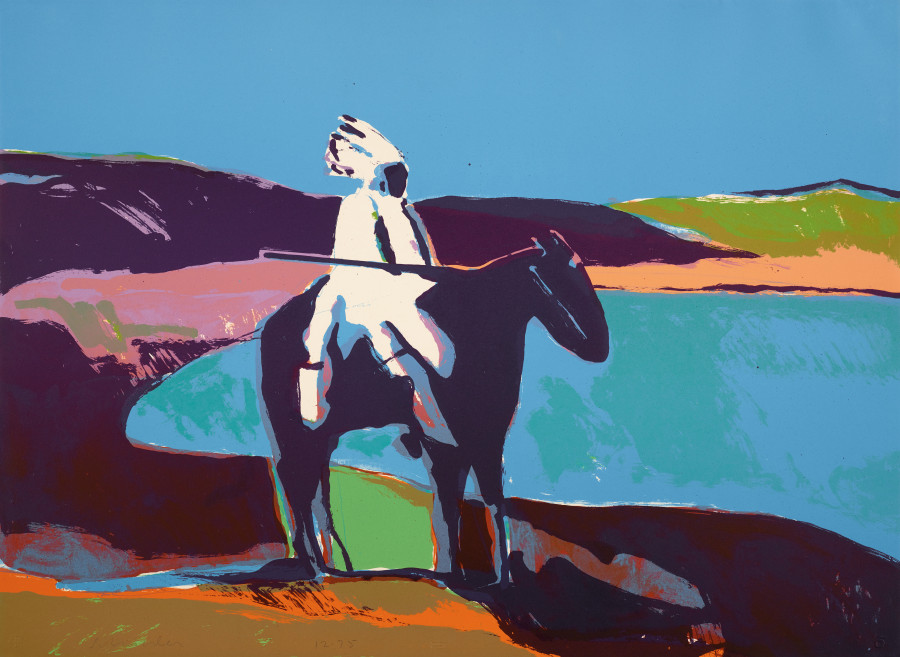Everything we need to know, we learned from Pixar: Our toys talk when we aren't around, monsters are actually soft-hearted performance artists, consumerism will indeed end humanity and a gaggle of balloons could carry our houses off to strange lands. The studio's newest lesson informs us that the voices inside our heads are real -- and they have distinct personalities.
"
Inside Out," the latest from "Monsters, Inc." and "Up" director Pete Docter, is set largely inside the mind of hockey-obsessed 11-year-old Riley Anderson (Kaitlyn Dias) as her family moves from Minneapolis to San Francisco. Stationed in a command center inside Riley's brain are five anthropomorphized emotions who drive her decision-making: Joy (Amy Poehler), Fear (Bill Hader), Sadness (Phyllis Smith), Anger (Lewis Black) and Disgust (Mindy Kaling). They experience the world as she does and act according to their respective attributes. But when Joy and Sadness lose some of the small globes that house Riley's core memories, they must travel to track them down, leaving Fear, Anger and Disgust at the helm.
Nestled throughout the clever universe that "Inside Out" creates are big ideas about how various emotions drive our identity. For every sight gag that makes kids chuckle, there's an eye-opening meditation for adults -- and that's just what Docter and his frequent producer, Jonas Rivera, intended. The Huffington Post interviewed several involved with the film for a look at how it was made and why its themes resonate.
Pete Docter, writer/director: This was about watching my daughter go from a little, happy, hyperactive kid to a little more reserved and quiet, and that change as a father where you’re sort of like, “Oh, I liked you as a little, quirky, happy kid.” And now, of course, she’s a beautiful young woman and I love her, but the childhood part won’t come back and there’s something kind of tragic and sad -- and beautiful and necessary and all those things. So that’s what we were talking about in this film.
Jonas Rivera, producer: Our character, Riley, not unlike Pete’s daughter, Elie, who I’ve known her whole life, is a kid that seemed born happy.
Docter: I felt pretty strongly it should be a girl, and that was cemented when we did some research. Talking to psychologists, they told us there’s no one on earth more socially keyed-in than an 11 to 17-year-old girl.
Rivera: There were some scientists we talked to and some books we read that quote 26 clinical definitions of emotions. And some say three. One of the gentlemen we worked with, Dr. Paul Ekman, who’s in San Francisco, put forth six at the beginning of his career. Five of them we have, plus surprise, which is interesting. We put Joy at the center, because she’s the character who represents that childhood joy that’s going to be crushed.
Docter: We wanted them to be clear and gettable. We wanted them to have a great diversity, and, weirdly, I don’t remember if this was a purposeful thing or not, but four out of the five are fairly negative. So Joy, then, is the lone positive. She has a tougher job. She has to soldier on not only through life, but also past these guys who are putting up a stink. That just made for her to have to work harder.
Bill Hader, Fear: I stalked Pixar and said, “I want to work with you guys.” I flew to San Francisco and did a tour of Pixar because I was a big fan, and then I met a lot of the people there. Then what happened was they said, "You should come out to Pixar and just write with us for a week." So, I hung out in the story department and I wrote. That was May of 2011. The movie was about a little girl and the emotions in her head, but the story was totally different. It wasn’t about her moving and there was no hockey. At the end of that week, they put me in a recording studio and said, “Why don’t you just improvise as these different characters? Let’s just do different voices.” So I did all the emotions. And then I went home and a couple months later Jonas called me and said, “Hey, you want to play Fear?"
Phyllis Smith, Sadness: They flew me up to the Pixar campus. ... There was quite a roomful of people and they presented their idea to me. It was a lot of information and I was trying to absorb it. They had all the drawings wrapped completely in a circle around the room and they went through them and they’d talk about the story. They said, "We’ve considered you for this character of Sadness," and they had some preliminary drawings of what they thought she might look like. She was more of a teardrop shape in the beginning, or what I saw of her was. I think at that point in the process, Lewis Black had already been presented the idea. Same with Bill Hader and Mindy Kaling. Amy Poehler came on board later.
Mindy Kaling, Disgust: The difference between this movie and some of the other Pixar movies was that the world was completely made up. If you take, for instance, "Toy Story," those toys are all toys that many of us have seen. They’re the classic, iconic toys and it’s what a kid’s room would look like. When the interior is inside of a girl’s mind, it’s very hard to tell what that would even look like until you see it.
![inside out islands]() To create the world, Docter and Rivera culled a list of everyday experiences to design a command center where the five emotions reside. As the chief, Joy sits behind a dashboard and coordinates Riley's reactions alongside her four cohorts. Right outside of the command center sits the depths of Riley's mind, which includes several islands that represent aspects of her subconscious. That's where everyday sensations are personified: Train of Thought, for example, is an automobile that transports the denizens of Riley's mind from one location to another, while Dream Production puts on Riley's dreams each night and Abstract Thought houses surreal logic. Each doubles as a memento of human psychology, characterized with effects like the pixie dust that floats off of the emotions as they move.
Docter:
To create the world, Docter and Rivera culled a list of everyday experiences to design a command center where the five emotions reside. As the chief, Joy sits behind a dashboard and coordinates Riley's reactions alongside her four cohorts. Right outside of the command center sits the depths of Riley's mind, which includes several islands that represent aspects of her subconscious. That's where everyday sensations are personified: Train of Thought, for example, is an automobile that transports the denizens of Riley's mind from one location to another, while Dream Production puts on Riley's dreams each night and Abstract Thought houses surreal logic. Each doubles as a memento of human psychology, characterized with effects like the pixie dust that floats off of the emotions as they move.
Docter: In terms of where the sparkle thing comes from, I set down this idea at the beginning like, “I want these guys to look the way our emotions feel to us.” So they shouldn’t be made out of skin or wood or whatever. We came up with this idea with the art and technical departments of energy, like these roiling particles that have clumped together in these forms. But as Joy moves fast, she leaves some behind and they linger in the air. And it just felt like a good way of representing that energy and emotion.
Hader: They came to "SNL" to research for the Dream Production sequence in the movie. It has a live-television element to it, so they wanted to see what it looks like. They were taking notes and watching the cue cards and where the camera is and how the stage looks and how the set looks and how the control room looks. Then Pete Docter pitched me the movie sometime in 2012. We sat down and he started with, “Here’s a picture of my daughter, Ellie. A little girl, look how happy she is. Now here she is at the age of 13, and she looks sullen and her hair is in her face and she looks like a teenager. We all go through this, and I want to know why. What’s going on in her head?" And he told me the story -- kind of like a PowerPoint of the story -- and it moved me to tears. His pitch made me cry.
Rivera: When we first started, I was saying, "Well, love should be an emotion." You throw all of these out there. But love is not an emotion -- love is a state of being. So there’s all kinds of things. We were really schooled on what is and isn’t an emotion.
Docter: Things that seemed the most accessible and appeared the quickest, we would dive into. Abstract Thought was one. Just as an animator, I was like, “Oh, we gotta go there.” We had it in an early draft of the movie, and the rest of the movie didn't work, but at that part, everybody kind of leaned forward. So we knew we had to somehow make sure this survives and weaves into the story. Another was songs getting stuck in your head. This is probably fairly obvious, but the way you make stuff is to come up with, like, 8,000 things. You look at any show -- “Seth Meyers,” for example. They’ll write 500 jokes for the five that he delivers on-air.
Smith: Originally it wasn’t supposed to be Joy and Sadness who go off together; it was supposed to be Joy and Fear who were paired up.
Kaling: More than any other job I’ve had, they were so open and wanting me to improvise or go off-script or add lines, and the great news about this was that I didn’t need to. The script was so good. It was the best thing about having people who were so generous. I’m a writer; I know how protective you can be of a script. But I didn’t need to, which is always such a delight, to find out the story is so tight you don’t need to.
Docter: Our rule for ourselves was the emotions are always adults. So even if Riley is 2, they speak like we do. But they approach the world with the limited understanding and knowledge of a 2-year-old: “All right, we all know that broccoli is poison.” So they talk about it almost like scientists would. So, as a 15-year-old, then, they would understand what a 15-year-old does.
Hader: Pete Docter showed me a maquette, which is kind of like a little statue, of Fear. He wasn’t clothed or anything. And then we talked about it and he said, “Well, what if he’s a kind of middle management-type guy? Someone who wants to be in control, but doesn’t have the capacity to do it?” I remember Pete, in the room, drew the character and put a little bow tie on him. I remember him saying Fear kind of seems like Don Knotts. I recorded a bunch of different voices and sent them to Pete, and Pete said, “You know, what if we pick a version that’s closer to you, but you're playing a bureaucrat kind of guy, so you’re high-strung?”
Kaling: I went in for probably six sessions of four hours each, doing voice work. I got to read storyboards and visit Pixar, and that was really wonderful that I was able to see so much of the work they had already done. Whereas with other movies I just show up to record some lines, but there’s not a lot of talking about the process of getting the movie on its feet.
Hader: They called me about Poehler, and I remember calling Poehler before they called Poehler because they didn’t know Amy. I called and said, “Hey, Amy, you’re going to get a phone call from this guy Jonas and he’s awesome and this movie is awesome. It's one of the best things you’ve ever been a part of and you’ve been a part of some amazing things.” I just told her because it was very top secret. I was signed on for like a year by then. And then I found out about Mindy and Lewis Black and Phyllis Smith -- it kind of trickled in as we were working. They go, “Hey, you know who we got to play Anger? Lewis Black!” I go, “Oh my God, that’s perfect.”
Smith: Amy and I had like three sessions together. I understand that generally it’s about seven or eight sessions, and I think I did about 10 or 12 sessions. I think it’s partially because the script changed along the way through the years. And also with Amy and I, it was great because the heavier scenes we did -- in fact, a lot of the stuff -- we actually recorded together, like when we’re trying to get back to the control center.
Hader: They just made me scream a lot. At every single recording session, you would see these lines that are all in caps and then they would go, "Oh okay, let’s just wait. We don’t want to blow out Bill’s voice." So at the end I would just scream and they would blow out my voice. The nice thing is you’re not just in a booth by yourself; they’re in the room with you at a table and you’re going back and forth. It’s a very collaborative thing.
![inside out riley]() Kyle MacLachlan, Riley's father:
Kyle MacLachlan, Riley's father: The working process is a little different, as you can imagine. I would drive to Disney and they had a studio and they had a microphone, and they just kind of talked me through what they were expecting. There was a script, but there was nothing for me to work off of, which is usually what happens when you do ADR or something like that. The first day I was working with Diane Lane, who is fantastic and I've known Diane for years and years and years. She plays the mom. So we were able to work off each other a little bit, which was helpful. But the rest of the time it's just me and a microphone, and Pete Docter maybe is there. Maybe he's not even there; maybe he's a video feed coming down from Emeryville.
Kaling: Obviously, I love Bill and Amy, and I’ve know them for a while, so any opportunity to see those two guys is great. But I have to say I really loved the experience of reading with Pete because he’s a director and he’s been with the movie for so many years, so he can tell me what he’s looking for or give me direction within the context of what other people have done.
MacLachlan: There are some pretty big themes here: the importance of family obviously is one, the idea that it's okay to accept some sadness and some difficult things to become a fully-formed human being. It's a journey of moving from childhood to adolescence. I find that as an adult, I'm carried right back to those early times, and there's a lot of emotion that this film brought up in me.
Kaling: The single biggest thing I took away from the movie, and the reason why I’m so happy it was made, is getting the message out that sadness is vital and that it’s not something to feel ashamed of -- it really is useful. Because I think there are times -- and this isn’t just for children, this is for everyone -- where it can seem very overwhelming, and the fact that it has a use to help you grow, I think, is a very comforting thing.
Rivera: The way I look at it is, I see the movie “Dumbo” now very differently than I did when I was 6. I didn’t understand the emotional depth of it, or that sense of loss or yearning from the parent. I saw Timothy Mouse and the fun circus and pink elephants on parade and music, or whatever. But as an adult, I just see it as this sophisticated story. We try to make movies -- and it sounds corny, but we don’t mean it to be -- for everyone. John Lasseter tells us to “make movies you’d want to go see." There’s a gag in the movie where Bing Bong, Riley's old imaginary friend, does a little dance and spills the facts and opinions and mixes them up and says, “Don’t worry about that.” I brought my family to Pixar to see it for the first time the other day. My son is 3 and he busted up at that. He didn’t laugh because the facts and opinion got mixed up; he laughed because it spilled. In his world, it’s funnier if you spill your milk. So I said, “Oh, good, that wasn’t intentional, but he’ll see that when he’s 15 and he’ll go, ‘Oh.’”
Docter: But we don’t make movies for kids. We make movies for ourselves, knowing that kids will see them. But there has to be some kind of depth or emotional relatability onscreen.
Rivera: What comes to my mind, and we had this in the story room for a little while, is the dedication in
The Lion, the Witch and the Wardrobe. I don’t remember it exactly, but it’s to his granddaughter. He says, “This book’s for you. There will come a time when you will turn your back on it and it won’t make sense to you. But there will be a time when you’re older and you’ll return to it.” So that’s what I think of. Teenage years for everybody are rough, but then you come through it.
Docter: If we revisited Riley when she's 15, I think Joy would probably be a little less manic, although on one level, that’s what I like about her. Even at the end of the movie, she’s kind of still blissfully ignorant. She’s going to move forward blindly anyway. But I think she would be kept in check a little more anyway by the other guys. What else would happen? I think the whole internal structure of the world would change quite a bit. Those personality islands that we show at the end, some of them would be whittled away and some would get bigger as she becomes more formative.
Kaling: This movie is beautifully animated and there’s so much fun in the characters, and I think kids will love that. But the message about emotions and sadness and what the rarefactions are about temperament and personality will really resonate for adults.
Hader: These guys are real artists; it’s not a pandering thing or, “Gee, I think this is what people want to see.” This is a personal thing for Pete and that’s what he wants to see, but he does it on this giant, epic Disney/Pixar scope.
Docter: We don’t have to think about, "Is this an economically viable concept?" and, "Do these characters have marketability?" We just think about, “Is it something I want to see? Is it funny? Is it engaging?" Filmmaking is a tough world to be in. I do not relish the executives because they have to balance all those components: originality and freshness with marketability. When you’re dealing with something new, you don’t have the numbers to prove that people are going to want to go see this. It’s a gamble. Thankfully Jonas and I get to ignore that. We just get to hide out under the umbrella and make our movies, and we're very happy.
Rivera: I mean, this is all show business, right? It’s like, “You ain’t seen nothing yet.” That’s what we love. We want to keep doing that.
"Inside Out" opens June 19.
-- This feed and its contents are the property of The Huffington Post, and use is subject to our terms. It may be used for personal consumption, but may not be distributed on a website.


